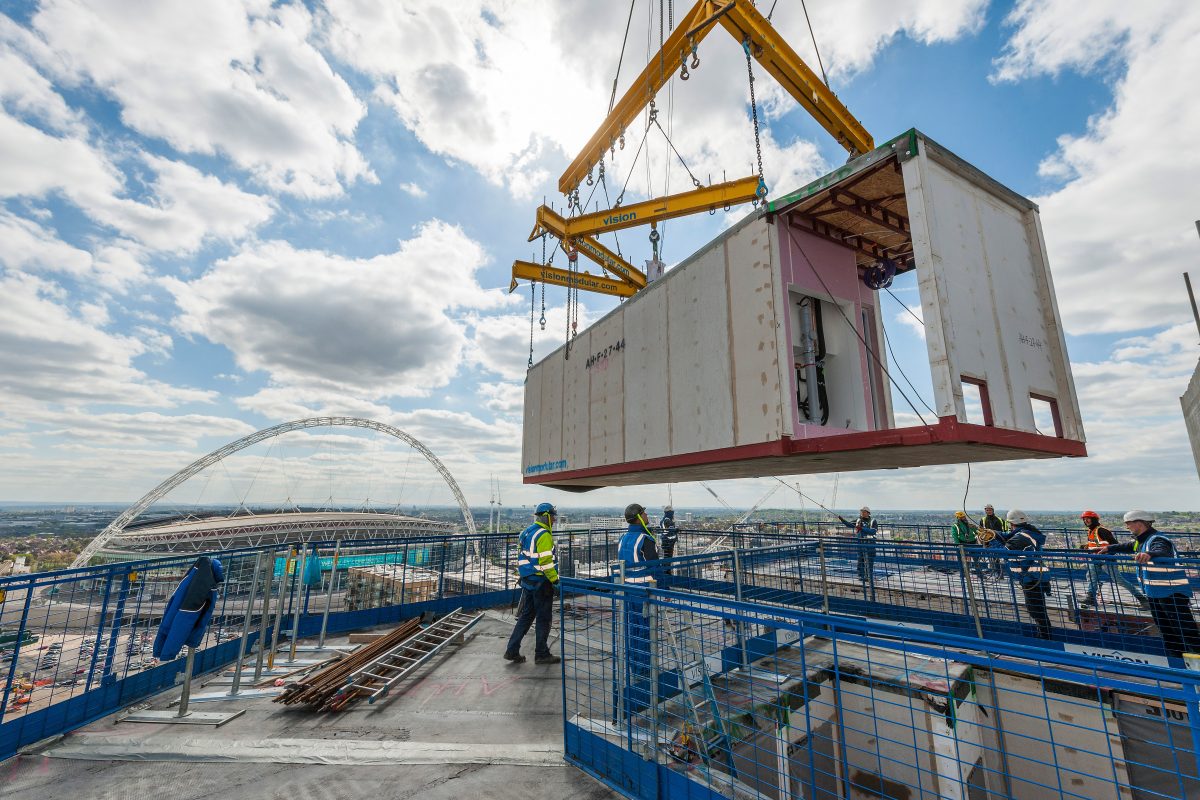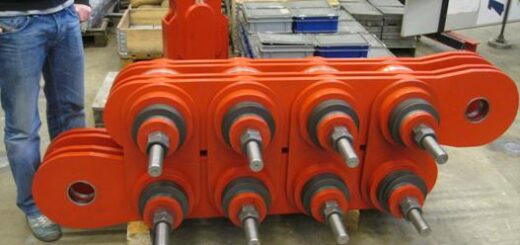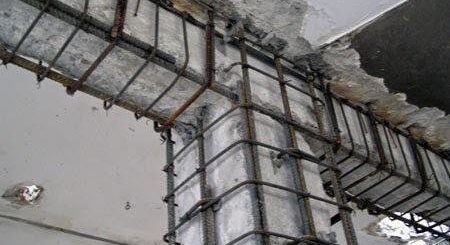Modular Construction: Building for the Future
The construction industry is experiencing a significant transformation with the advent of modular construction. This innovative approach, which involves the use of pre-fabricated modules or components in building projects, has been gaining traction in recent years. It offers a range of benefits, from reduced construction time and costs to improved quality control and environmental sustainability.
In this comprehensive article, we’ll look into the world of modular construction, exploring its history, types, applications, benefits, challenges, and its promising future.
History and Evolution
Modular construction isn’t a new concept. It has a long history that goes back to the ancient civilizations. The idea of creating building components off-site and assembling them on location has been around for centuries. However, the modern modular construction we know today has evolved significantly.
In the mid-20th century, modular construction gained momentum in the United States. The post-World War II era saw the rapid expansion of suburbs, and modular homes became a popular solution for affordable housing. These homes featured factory-built components, which were transported to the construction site and assembled quickly, offering an affordable and efficient housing solution.
Types of Modular Construction
Modular construction has evolved, and today, it encompasses various approaches:
1. Volumetric Modular Construction
Volumetric modular construction involves creating three-dimensional units, often entire rooms or sections of a building, in a controlled factory setting. These units, known as modules, are transported to the site and assembled together. This approach offers a high degree of customization and quality control.
2. Panelized Modular Construction
Panelized construction involves the creation of wall, floor, and roof panels in a factory. These panels are then transported and assembled on-site. Panelized construction is known for its efficiency and design flexibility.
3. Hybrid Modular Systems
Hybrid systems combine elements of volumetric and panelized construction. This approach allows for greater customization while still benefiting from the efficiencies of modular construction.
Benefits of Modular Construction
The rapid adoption of modular construction can be attributed to a wide range of benefits:
1. Speed and Efficiency
Modular construction significantly reduces project timelines. Components are manufactured in parallel with on-site work, leading to quicker project completion. This is particularly advantageous in sectors like healthcare, where rapid construction is crucial.
2. Cost Savings
The efficiency of modular construction often translates into cost savings. Reduced labor costs, minimized waste, and better material management contribute to a more economical building process.
3. Quality Control
Factory-controlled environments ensure consistent quality. The use of precise machinery and automated processes leads to fewer defects and better-built structures. Quality assurance processes are standardized and rigorously enforced.
4. Sustainability
Modular construction can be environmentally friendly when compared to the convention construction. The controlled factory setting allows for better waste management and recycling. Moreover, the precise construction process can lead to energy-efficient buildings, which align with modern sustainability standards.
5. Flexibility and Design Freedom
Modular construction doesn’t limit architectural creativity. Innovative designs and complex building structures can be achieved with the right approach. The adaptability of modular construction allows for the creation of unique and functional spaces.
6. Reduced Site Disruption
The reduced on-site construction time means less disruption to the surrounding area. This is particularly beneficial in urban environments, where minimizing noise and disturbance is essential.
Image Source: Internet
Challenges and Limitations
While modular construction offers many advantages, it’s not without its challenges and limitations:
1. Transportation
Transporting large modules to the construction site can be logistically complex, especially in urban areas. Roads, bridges, and other infrastructure must be capable of handling the weight and size of these modules.
2. Limited Design Flexibility
Modular construction, by its nature, relies on standardization. This can limit the degree of customization in some projects. Architects and designers need to work within the constraints of the modular components.
3. Site Integration
Ensuring that modules fit seamlessly on-site can be challenging. Factors like weather conditions, site preparation, and coordination between on-site and off-site teams are critical to the success of modular projects.
4. Initial Investment
Setting up a modular construction facility and acquiring the necessary equipment can require a significant initial investment. This can deter some construction companies from adopting modular methods.
To address these challenges, innovative solutions are continually emerging in the modular construction industry.
Applications
Modular construction is versatile and can be applied to various building types:
- Residential Buildings
Modular homes have been popular for decades due to their affordability and speed of construction. Entire residential communities can be built using modular methods.
- Hotels and Hospitality
The speed of modular construction is ideal for the hotel industry, where rooms can be assembled quickly, reducing downtime and increasing revenue potential.
- Healthcare Facilities
Hospitals and healthcare centers require rapid construction to meet the demands of growing populations. Modular construction is a solution that enables the quick expansion of healthcare infrastructure.
- Educational Institutions
Modular construction is being used to create temporary classrooms and educational facilities. This flexibility allows schools to respond to changes in enrollment or construction needs.
- Commercial Buildings
Office buildings and commercial spaces are adopting modular construction for the benefits of cost and time savings. It’s also a sustainable choice, which aligns with corporate social responsibility goals.
Sustainability and Modular Construction
Sustainability is a critical concern in the construction industry, and modular construction can play a significant role in addressing this issue:
- Energy Efficiency
Modular construction can result in more energy-efficient buildings. The factory-controlled environment allows for precision in insulation and sealing, reducing energy consumption.
- Reduced Waste
In traditional construction, materials are often wasted due to overordering or improper storage. In modular construction, materials are ordered precisely, and waste is minimized.
- Recycling and Reuse
Modular construction components are designed for disassembly, making it easier to recycle or reuse materials when a building reaches the end of its lifecycle.
- Reduced Environmental Impact
By minimizing on-site construction time and its associated impacts, modular construction reduces the overall environmental footprint of building projects.
- Innovation in Sustainable Materials
Modular construction encourages the use of sustainable and eco-friendly materials, further contributing to its green credentials.
Case Studies
Let’s explore a few notable case studies that showcase the power of modular construction:
1. The Stack, New York City
- The Stack is a 28-story residential building in Inwood, New York City. It was built using modular construction techniques, which allowed it to be completed in record time, addressing the city’s housing shortage.
2. Blokable, Seattle
- Blokable is a company dedicated to creating affordable housing using modular methods. Their projects in Seattle have demonstrated the ability to provide quality, affordable homes at a rapid pace.
3. Radisson Red, Glendale, Arizona
- The Radisson Red hotel in Glendale, Arizona, is another example of modular construction. The hotel’s 155 guestrooms were built off-site and then transported and assembled on location. This approach allowed for a much faster construction timeline.
4. The B2 Tower, Brooklyn, New York
- The B2 Tower is part of the Atlantic Yards redevelopment project in Brooklyn. It’s an example of hybrid modular construction, combining both panelized and volumetric methods. The project demonstrated how modular construction can create an aesthetically striking and energy-efficient building.
These case studies underscore the versatility and success of modular construction in various types of projects, from residential buildings to commercial spaces.
Future Trends
The future of modular construction looks promising, with several trends shaping its trajectory:
1. Off-Site Component Manufacturing
- Off-site manufacturing of building components will become more common. This will reduce the workload on construction sites and enhance quality control.
2. Increased Automation
- The use of robotics and automation in modular construction will continue to grow, leading to even greater efficiency and precision.
3. Integration of IoT (Internet of Things)
- IoT technology will be integrated into modular buildings, allowing for smarter and more efficient use of space and resources.
4. Customization Advances
- Modular construction will become more customizable, allowing for a wider range of architectural designs and styles.
5. Global Expansion
- Modular construction is gaining popularity worldwide, with growth expected in Asia, Europe, and other regions.
Cost Comparison
One of the critical factors that attract stakeholders to modular construction is the potential for cost savings.
A study conducted by the Modular Building Institute found that modular construction can be up to 20% less expensive than traditional construction methods.
These cost savings are primarily due to the reduced construction timeline, fewer labor hours, and lower material waste.
The modular construction market is experiencing substantial growth. As the benefits of modular construction become more widely recognized, demand for modular buildings is expected to rise. The market is being driven by the need for fast and cost-effective construction, sustainable building practices, and flexible design solutions.
Safety is a top priority in the construction industry, and modular construction is no exception. Quality assurance measures are in place at every step of the modular construction process. Factory environments are controlled, and strict safety standards are enforced to protect workers. On-site assembly is also carefully monitored to ensure that modules are integrated safely and securely into the final structure.
Architects, engineers, and construction professionals must work closely together in modular construction projects. Collaboration is key to ensuring that designs are optimized for modular components, and that the final assembly meets the required safety and quality standards. This collaborative approach has led to the development of cutting-edge design solutions in modular construction.
Global Impact
Modular construction is not limited to a single region; it has a global impact. Various countries are embracing this construction method for its efficiency and sustainability. China, for example, has seen a significant rise in modular construction, with entire buildings being assembled in a matter of days. In Europe, modular construction is helping to address housing shortages and contributing to sustainable building practices.
Modular construction is reshaping the way we build, offering a faster, more efficient, and sustainable alternative to traditional construction methods. With its numerous benefits, including cost savings, design flexibility, and reduced environmental impact, it’s no wonder that modular construction is gaining widespread recognition and adoption in the construction industry.
As we look to the future, we can expect even greater innovation in modular construction, with advancements in technology, materials, and design. The construction industry is evolving, and modular construction is at the forefront of this transformation, offering a glimpse into the future of building.
With the potential for improved construction timelines, reduced costs, and more sustainable building practices, modular construction is set to play a pivotal role in shaping the cities and communities of tomorrow.
Frequently Asked Questions
What are the primary benefits of modular construction?
Modular construction offers cost efficiency, speed, quality control, sustainability, design flexibility, energy efficiency, and scalability. These advantages make it an attractive option for various construction projects.
Is modular construction suitable for residential homes?
Yes, modular construction is well-suited for residential homes. It allows for rapid construction while maintaining high-quality standards. Homeowners can choose from a range of designs and configurations to meet their needs.
Are modular buildings customizable in terms of design?
Absolutely. Modular buildings can be tailored to meet specific design and functionality requirements, offering a high degree of customization. This includes options for different architectural styles, interior layouts, and finishes.
How does modular construction impact sustainability?
Modular construction is more sustainable than traditional methods due to reduced material waste, energy-efficient features, and a smaller carbon footprint. The controlled factory environment also reduces exposure to weather-related delays and damage.
Are there any limitations to modular construction?
While modular construction offers many benefits, it may not be suitable for extremely complex or large-scale projects that require extensive on-site customization. Additionally, transportation costs can be a consideration for projects located far from the manufacturing facility.
Can modular construction be used for commercial buildings?
Yes, modular construction is widely used for commercial buildings, including offices, retail spaces, hotels, schools, and healthcare facilities. Its cost efficiency and speed make it an attractive choice for meeting the demands of various commercial projects.
Conclusion
Modular construction is a game-changer in the construction industry, offering a cost-effective, efficient, and sustainable alternative to traditional building methods. With its numerous advantages, including cost efficiency, speed, quality control, sustainability, and design flexibility, it’s no wonder that modular construction is on the rise. Whether you’re planning a residential home or a commercial project, consider the benefits of modular construction for a brighter and more sustainable future.




